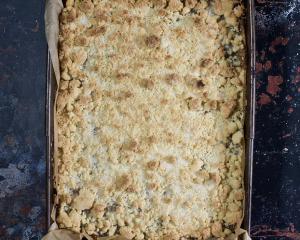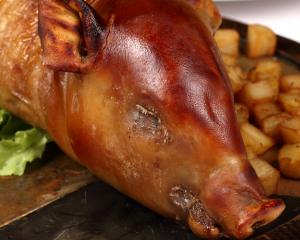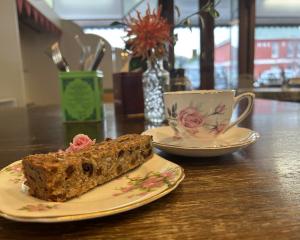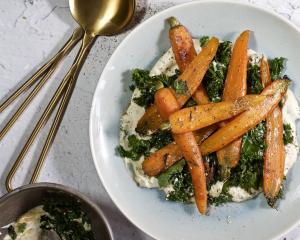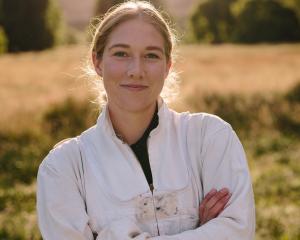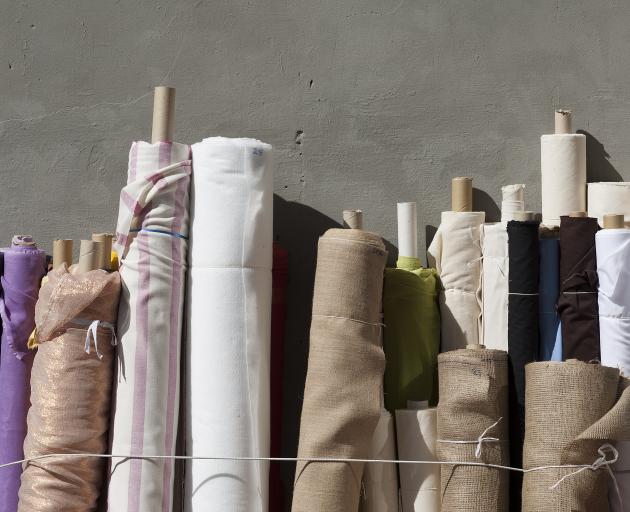
Ambiguous language is one of the easiest ways for brands to misrepresent their products. Descriptions of fabric are ripe for confusion, since fabric composition can be used interchangeably with fibre type or brand names on garments’ care labels.
"Consumers may assume ‘crepe’ is silk, but fabric composition does not guarantee fibre type," says Philippa Grogan, a sustainability consultant and textile scientist from Eco-Age. "For example, denim is a fabric, not a fibre — it is typically made of cotton but you can get denim made from linen, hemp and other fibres."
Here, experts explain some of the more confusing terms found on garment labels.
Acetate
Acetate is one of many artificial cellulosic fibres (MMCF): materials made from wood using an intense chemical process. Where it differs from the others is in the forms it can take: it can be hard like plastic, or turned into a smooth and shiny textile that is used as a substitute for rayon or silk (although it’s not as breathable).
"Acetate is often used as an alternative to conventional plastic and is a popular material choice in eyewear and jewellery," Grogan says. Because of the source material and processing, she says best practice for sourcing acetate requires third-party certification of both the wood and the chemical process.
Bamboo
Bamboo can be processed into a fibre that is very similar to linen in look and feel, or in the same way as other wood-based fibres, using a corrosive chemical processing method that produces a soft, smooth fabric often used in underwear and activewear.
The second method is far more common. The author of To Dye For and founder of EcoCult, Alden Wicker, says the product should technically be called either bamboo-rayon or bamboo-viscose. "It uses those same harsh chemicals to break down bamboo into a pulp ... and that process can be managed well, or not."
The source of the raw material can also be cause for concern, says the senior director of sustainability at Moose Knuckles, Tara St James. "Bamboo forests have been planted on land that once held old-growth native forests, damaging ecosystems."
Crepe de chine
In the past, crepe de chine referred only to a slightly transparent, matte silk. The name describes a weave "that gives a slight textured feel to the fabric but is light and drapey which makes it perfect for evening wear and blouses", St James says.
But since it is the name of a fabric, not a fibre, the name is now applied to many materials, including polyester. So if your heart is set on silk, be careful to check for a fibre composition label too.
Cupro
Cupro is another smooth and shiny rayon. Lightweight, breathable and fast drying, it is commonly used for linings and in dresses and blouses. But instead of being made from wood, its raw material is cotton linter, a by-product of cotton processing.
"The chemical processes are also one of the biggest impacts linked to cupro," Grogan says. "But the fibre can be produced using closed-loop systems."
Fleece
Although it may sound like it comes off a sheep’s back, fleece refers to a fluffy, synthetic, towel-like material — the kind used for zip-up vests.
Wicker describes it as a one-time "poster child for sustainable fashion", because it’s often made from recycled water bottles. "Lately, though, the wisdom of turning plastic bottles [which are recyclable] into fibres [which are generally not] has been called into question."
Modal
Modal is another artificial cellulosic fibre in the viscose rayon family, derived from wood pulp, often from the trunks of beech trees. The wood pulp is dissolved into a viscose liquid which is extruded through a device that looks like a showerhead to produce the yarns. It is often hailed as an alternative to cotton and "has a soft and silky feel with excellent moisture absorption", St James says.
Like most other MMCFs it’s important to look for certifications to ensure the wood does not come from ancient or endangered forests, and that the water and chemicals used are well managed.
Ramie
"Ramie is an ancient bast fibre and belongs to the same family as linen, hemp and nettle," Grogan says. Bast fibres take their names from the plants they are made from (with the exception of linen, which is made from flax).
With ramie, the soft inner fibres of the plant’s woody stalks are typically removed through mechanical processing, and then spun and woven into fabric. This usually doesn’t require chemicals, which is why these materials have a slightly uneven, coarse finish.
Grogan says "bast fibres such as ramie are renewable natural fibres, have a relatively low water footprint and can thrive without chemical pesticides". They are known for their durability, breathability and absorbency. When the fibres are processed using chemicals, the result is a much smoother, shinier fabric without any natural imperfections.
Satin
"This used to be a certain weave of silk," Wicker says. "But most often today it’s made of polyester or viscose rayon. You need to double-check!"
Like denim and crepe, "satin is the name of the woven structure of a fabric", St James says.
"Not all satin is silk, and therefore it’s not all equal," she says. Be wary of lower-priced satin evening wear. It is likely a cheap synthetic masquerading as silk.
Tencel/lyocell
Of all the fabrics in the viscose rayon family, lyocell has one of the lowest environmental impacts.
Lyocell is derived from pulped beech and eucalyptus trees, from sustainably managed forests, while Tencel is a brand of lyocell, made by the Austrian company Lenzing.
Wicker says lyocell has one of the lowest environmental impacts in the viscose rayon family because "it uses chemicals that are less harsh, and the process circulates the chemicals back through the system instead of dumping them into the environment". — Guardian News & Media




